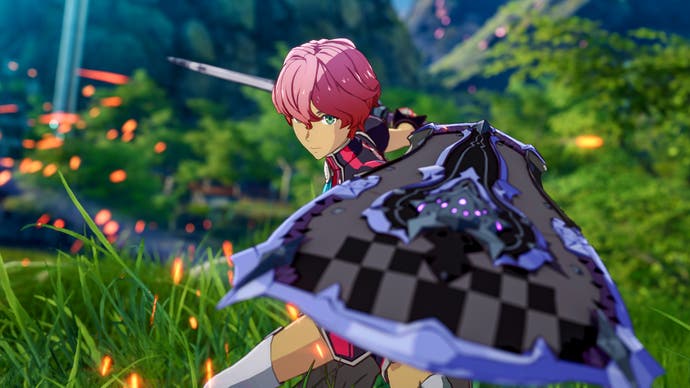Blue Protocol is Amazon's next punt on East meets West
"Our motto is fair and fun."
Like Lost Ark before it, Blue Protocol is another example of East meets West from Amazon Games. Developed by Bandai Namco (and already released in Japan), Amazon is now publishing the game on Western shores and adding yet another MMO to its portfolio alongside New World.
It seems Amazon's intention is to dominate the MMO space, but is its strategy simply to throw stuff at the wall and see what sticks? Will Blue Protocol be the stickiest of the lot? At the very least, the anime MMO is a good fit for Amazon's gaming output, with its familiar gameplay and strikingly colourful visuals.
"It's very different from Lost Ark, it's very different from New World," franchise lead Mike Zadorojny told me. "The art style, the storytelling, the anime rich nature of it speaks to a slightly different audience. New World is definitely a little bit more PvP focused in the dungeon aspect of it; Lost Ark is really about the progression system. And [Blue Protocol] is a very story driven game."
Much of that story was kept under wraps during a preview session I recently attended, but I was still able to get a decent grasp on how the Amazon and Bandai Namco collaboration will play.
Blue Protocol is an action-focused MMORPG. Players will explore a vast and colourful world, and enter dungeons as a team of up to six total players to defeat monstrous bosses. The hour-long demo I played offered a chance to experience all of this, and the game certainly makes a good first impression: it's beautiful, it's clean and easily comprehensible, and its combat is simple fun.
I chose to play as a Spell Weaver - the main magic class - which meant hanging back and flinging elemental spells like one-shot fireballs and clouds of ice to damage over time. Enemy AoE attacks are clearly telegraphed and a dodge button allows players to swiftly manoeuvre around the battlefield. It's easy to parse and feels snappy, though there was little need for teamwork between players - at least in this early-game dungeon.
Other classes include the Keen Strider archer, the duel-wielding Twin Striker, the ground-shaking Foe Breaker, and the straightforward Blade Warden with sword and shield. Interestingly, Blue Protocol doesn't prescribe to the typical trinity of damage dealer, tank and healer. Instead, all classes can mix and match between these roles, depending on the skills they acquire.
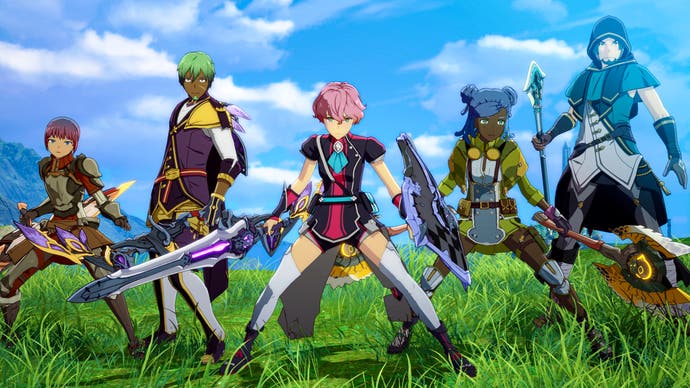
Indeed, player flexibility is a big part of the Blue Protocol experience. "You are creating your own hero, your own avatar within the game," Zadorojny said. "And then going into more depth on the player side, it allows players to play the way they want to, because each class is built around a spectrum, not necessarily a particular role you're signing yourself up to. Being able to choose based on which class or which skills you're bringing makes it so that if you want to be really DPS focused by yourself, great - but when you're playing with your friends, if you want to bring a little more crowd control or some more support, you can do that."
The preview began with the character creator, which was nicely diverse. Options are gender-locked and a little limited, but there's a variety of skin tones through colour sliders. Facial hair options were minimal, but I did at least manage to sport a rather fetching moustache.
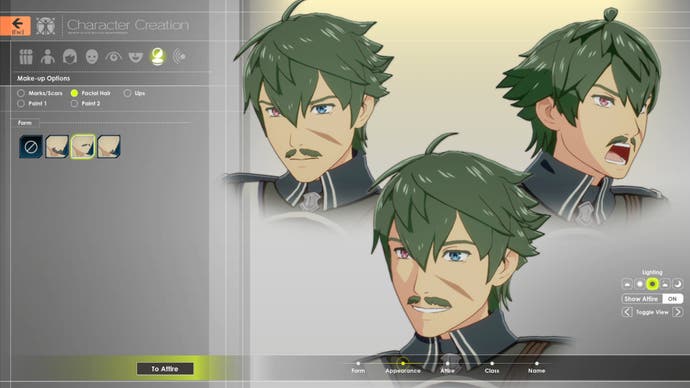
After a short tutorial battle and story intro, I was free to explore the pretty but empty open world, defeat some of the local fauna, and ride around on a fully customisable mount. I then skipped ahead to a pre-made character with more abilities unlocked: those aforementioned elemental spells, as well as familiars to summon and an ultimate ability on a cooldown, which all felt tight and responsive to wield. Characters also unlock passive abilities available across classes (which can be easily switched by changing weapons), so progression in one class can impact others and provides a further element of cross-class customisation.
Another key element to the game is its approachability. Its structure and combat will be familiar to anyone with an interest in MMOs, but newcomers will also be welcome. The UI is bright and clear, quests are clearly labelled, and character movesets and rotations are intuitive.
"The goal is to make the game very approachable and easy to get into, but still provide depth on the back end," Zadorojny said. The amount of customisation will allow players to tailor the experience to their needs, while also providing depth for those interested - particularly with late game crafting and passive abilities. Whether players want to simply experience the story or dive into deep customisation to augment each other's abilities, both are possible.
Adding to that approachability is the fact Blue Protocol will be free-to-play. Zadorojny assured me that players will only pay for cosmetics.
"Our motto is fair and fun. Fair being that you should not have a demonstrably significant advantage in combat versus me if you're buying and I'm not," he said. "The fun aspect is going back to the cosmetic side of things, if there's a particular style that you like, you can go purchase that and celebrate that fashion style. But it doesn't take anything away from me for not purchasing.
"You basically can play the whole story content, one to max level, without purchasing anything, because we want players to have that free-to-play experience."
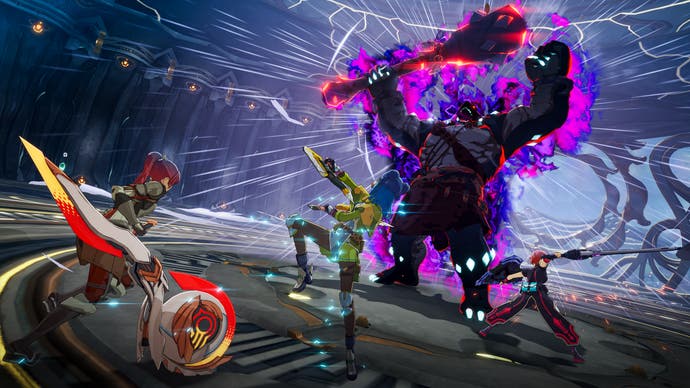
Monetisation will come in three forms. Firstly, Amazon will release founders packs (as with its previous games) for early adopters including unique cosmetics. Secondly, there will be a season pass including a number of free tiers but with more rewards available for those paying. Thirdly, there is the Capsulator - a gacha model - though this will be amended from the Japanese release for the West.
"We're modifying it slightly for the Western audience, because the way we approach random is very different than the way they do from a cultural perspective," said Zadorojny. "So yes, the items you buy from the Capsulator will have a hard cap - so after X number of pulls, you're guaranteed a top rank item just to make sure you're not fighting random the entire time."
Cosmetics you already own can be converted into a secondary currency with a unique shop for purchasing new items.
Further changes will also be made between the already-released Japanese version from Bandai Namco and the version being released in the West next year, though these are minor, Zadorojny said.
"Generally speaking, our goal is to respect the artistry and respect the craftsmanship that's gone into this. People want to play an anime game, we get that. We're supporting the Japanese audio in there, in addition to the English audio, so if you want the authentic experience, you can totally do that.
"The things we are changing generally fall into categories like legal compliance for various territories, or regulatory things we need to make adjustments for. And generally speaking, there are some things that are more culturally acceptable in Japan, that aren't looked upon favourably by Western audiences. And so we do really respect that."
Lost Ark, for instance, received criticism for its female representation through gender-locked classes and skimpy armour sets. Amazon is learning from this for Blue Protocol.
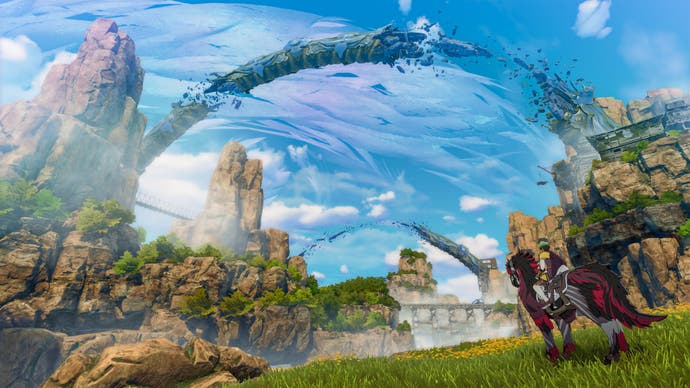
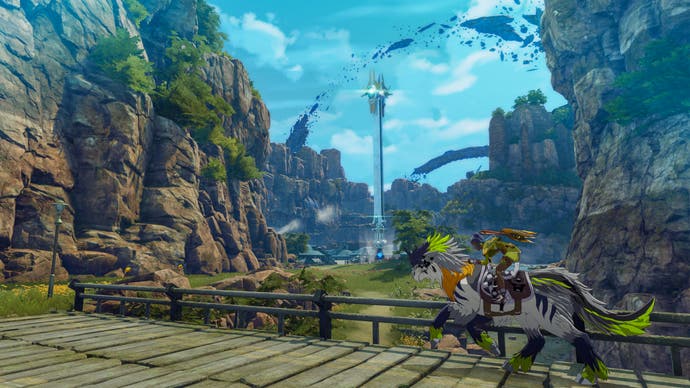
"The anime art style is generally welcoming, and that allows us to hit the high beats that the characters are like, in terms of trying to build a fantasy and anime-style world," Zadorojny said.
"But for some things, we have to be protective of children. And so some of the outfits we're making a little less revealing, just because that way we're not getting in trouble with ratings boards, [and] it makes it approachable so players can play with their family members."
This isn't Amazon's first time adapting an existing Asian game for the West, so what else has it learned through this process?
"Every time we launch a new title, [we ask] how can we be a better partner? How can we make sure we're supporting the development team as best we can?" Zadorojny replied. "How are we providing [developers] an insight into Western players and the mindset they have, so that as they're looking at the content schedule, what they're going to be adding to the game post-launch really has the Western player in mind?
"It's not just about building an Eastern game or Western game, but building a global game."
Some players in Japan who have already played Blue Protocol have noted a lack of endgame content. In terms of longevity, Zadorojny promised a regular cadence of updates, with a sixth class joining soon after release as well as the next chapter in the story. On top of this are a season pass and seasonal events to keep players engaged.
Still, the publisher has struggled with the longevity of its games. After an initially huge spike of interest, both Lost Ark and New World have seen their audiences diminish. Could Blue Protocol finally break that mould?
Zadorojny isn't too worried about that here.
"The one thing we are trying to respect as a free-to-play game is it's okay if players leave, as long as they're excited about the next big thing," he said. "Especially for an anime story, people are going to want to know what happens in the next chapter. Those are going to be big moments players are going to come back for.
"Our goal is not necessarily to make sure players are always playing the game every single day, but making sure that when they play the game, they're having a really good time. They're having an amazing experience that when something new comes into the game, they want to come back for it."
As with the typical desire to return for the story, Blue Protocol has a banger of an anime opening with music from Japanese band L'Arc-en-Ciel. Yet whether its approachability and customisation options are enough of a hook to differentiate the game from its key competition (Genshin Impact and Honkai: Star Rail in particular) remains to be seen. Bandai Namco has created a decent effort for Japan; now it's up to Amazon to convince the rest of the world.
